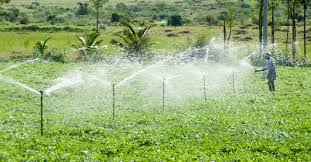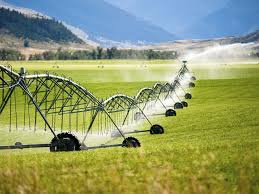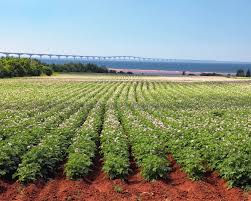Climate-smart cropping systems are innovative agricultural practices designed to enhance productivity while adapting to and mitigating the effects of climate change.
These systems integrate various principles and practices that focus on improving crop resilience, optimizing resource use, and ensuring sustainable food production.
As global temperatures rise and weather patterns become more unpredictable, traditional farming methods often struggle to meet the demands of a growing population.
Climate-smart cropping systems offer a proactive approach to these challenges, promoting agricultural practices that are not only environmentally friendly but also economically viable for farmers.
At the core of climate-smart cropping systems is the recognition that agriculture must adapt to changing climatic conditions. This involves selecting crop varieties that are resilient to drought, heat, and pests, thereby reducing vulnerability to climate-induced shocks.
For instance, farmers may opt for drought-resistant seeds or utilize crop rotation to improve soil health and minimize pest infestations. These strategies not only enhance crop yields but also contribute to the overall sustainability of farming practices by preserving natural resources.
Another essential principle of climate-smart cropping systems is the efficient use of water and soil. Integrated water management practices, such as rainwater harvesting and drip irrigation, can help optimize water use in agriculture, particularly in areas facing water scarcity.
Soil health is equally crucial; practices like cover cropping, reduced tillage, and organic amendments improve soil fertility and structure, allowing for better moisture retention and nutrient availability. By focusing on these aspects, farmers can create resilient farming systems that withstand the impacts of climate change.
Moreover, climate-smart cropping systems emphasize the importance of biodiversity. Diverse cropping systems can provide multiple benefits, such as reducing the risk of crop failure, enhancing ecosystem services, and supporting beneficial organisms like pollinators and natural pest predators.
Intercropping and agroforestry are examples of practices that increase biodiversity, contributing to more resilient farming systems. By fostering a diverse agricultural landscape, farmers can improve their adaptive capacity and long-term sustainability.
Climate-smart cropping systems also promote the reduction of greenhouse gas emissions from agriculture. Practices such as agroecology, which focuses on the ecological relationships within farming systems, can significantly lower emissions associated with conventional farming practices.
This includes adopting practices that minimize the use of synthetic fertilizers and pesticides, which are major contributors to greenhouse gas emissions. By shifting towards more sustainable inputs and practices, farmers can play a vital role in mitigating climate change while maintaining productivity.
Climate-smart cropping systems present a comprehensive framework for sustainable farming. By integrating resilience, resource efficiency, biodiversity, and emissions reduction, these systems enable farmers to adapt to a changing climate while ensuring food security for future generations.
As the global community continues to grapple with the challenges posed by climate change, the principles and practices of climate-smart cropping systems offer a path forward for sustainable agricultural development.
Through collaboration, education, and innovation, we can harness these practices to create a more resilient and sustainable agricultural sector that benefits both farmers and the environment.
Importance of Climate-Smart Agriculture

1. Mitigating Climate Change: Climate-smart agriculture (CSA) aims to reduce greenhouse gas emissions from agricultural practices, helping to mitigate climate change and its adverse effects on food systems.
2. Enhancing Food Security: By improving productivity in a sustainable manner, CSA contributes to food security by ensuring that sufficient food is produced to meet the needs of growing populations.
3. Increasing Resilience: CSA practices enhance the resilience of farming systems to climate-related shocks, such as droughts and floods, ensuring that farmers can adapt to changing climate conditions.
4. Promoting Sustainable Resource Use: CSA encourages the efficient use of resources such as water and nutrients, promoting sustainable practices that protect the environment while maximizing agricultural output.
5. Economic Viability: By adopting CSA practices, farmers can improve their profitability through increased yields and reduced input costs, contributing to the economic stability of farming communities.
Principles of Climate-Smart Farming
1. Productivity Improvement: Focus on increasing agricultural productivity in a sustainable way to meet the rising demand for food without compromising environmental integrity.
2. Climate Adaptation: Incorporate adaptive strategies to manage the risks associated with climate change, ensuring that farming systems can withstand climatic stresses.
3. Greenhouse Gas Reduction: Implement practices that reduce emissions of greenhouse gases, such as optimizing fertilizer use, improving manure management, and incorporating agroforestry.
4. Biodiversity Conservation: Promote biodiversity through diversified cropping systems, crop rotation, and agroecological approaches that support ecosystem health and resilience.
5. Involvement of Stakeholders: Engage local communities, governments, and organizations in the development and implementation of CSA strategies to ensure that they are context-specific and effective.
Sustainable Soil Management Practices
1. Cover Cropping: Planting cover crops during the off-season protects soil from erosion, enhances soil fertility, and improves water retention, contributing to overall soil health.
2. Reduced Tillage: Minimizing tillage helps maintain soil structure, reduces erosion, and enhances carbon sequestration, promoting sustainable soil health.
3. Organic Matter Addition: Incorporating organic matter, such as compost or green manure, improves soil structure, enhances nutrient availability, and increases microbial activity.
4. Crop Rotation: Rotating crops helps break pest and disease cycles, improves soil nutrient balance, and enhances biodiversity, contributing to healthier soil.
5. Integrated Nutrient Management: Using a combination of organic and inorganic fertilizers tailored to specific soil and crop needs helps optimize nutrient use efficiency while minimizing environmental impacts.
Integrated Pest and Disease Management (IPDM)
1. Holistic Approach: IPDM combines biological, cultural, physical, and chemical tools to manage pests and diseases, focusing on long-term prevention rather than short-term control.
2. Monitoring and Identification: Regularly monitoring crops for pests and diseases allows for early detection and accurate identification, enabling targeted interventions that minimize damage and reduce pesticide use.
3. Biological Control: Utilizing natural predators, parasites, or pathogens to control pest populations can help maintain ecological balance while reducing reliance on chemical pesticides.
4. Cultural Practices: Implementing practices such as crop rotation, intercropping, and sanitation can disrupt pest life cycles and reduce the spread of diseases.
5. Pesticide Management: When necessary, using pesticides judiciously and following integrated pest management (IPM) principles can minimize environmental impact and protect beneficial organisms.
Read Also: Poultry Housing Management: Poultry Pen/House Construction Guide
Water Conservation Techniques

1. Drip Irrigation: This efficient irrigation method delivers water directly to the plant’s root zone, reducing water loss through evaporation and runoff while promoting healthy plant growth.
2. Rainwater Harvesting: Collecting and storing rainwater can supplement irrigation needs and reduce reliance on groundwater or municipal water supplies, particularly in arid regions.
3. Mulching: Applying organic or inorganic mulch helps retain soil moisture, suppress weeds, and improve soil health by adding organic matter as it decomposes.
4. Soil Moisture Sensors: Implementing technology to monitor soil moisture levels helps farmers apply water only when needed, optimizing water use and enhancing crop performance.
5. Contour Farming: Practicing contour farming on slopes helps slow water runoff and reduce soil erosion, allowing more water to infiltrate the soil and benefit crops.
Crop Rotation and Diversification
1. Nutrient Management: Rotating crops helps maintain soil fertility by varying nutrient demands and allowing different plants to utilize soil nutrients, thus reducing the risk of nutrient depletion.
2. Pest and Disease Control: Crop rotation disrupts the life cycles of pests and diseases, minimizing their populations and reducing the need for chemical interventions.
3. Soil Health Improvement: Diverse root structures from different crops enhance soil structure and health, promoting better water infiltration and nutrient retention.
4. Economic Resilience: Growing a variety of crops can help farmers spread financial risk, as different crops may have varying market demands and growing conditions.
5. Enhanced Biodiversity: Crop diversification promotes ecological balance, attracting beneficial insects and enhancing overall farm biodiversity.
Use of Climate-Resilient Crop Varieties
1. Drought Tolerance: Climate-resilient varieties are bred to withstand drought conditions, ensuring stable yields even during periods of low rainfall.
2. Pest and Disease Resistance: These varieties often exhibit natural resistance to specific pests and diseases, reducing the need for chemical control and enhancing crop survival.
3. Adaptation to Climate Variability: Climate-resilient crops are designed to thrive under changing environmental conditions, such as fluctuating temperatures and altered growing seasons.
4. Enhanced Nutritional Value: Many climate-resilient varieties are bred not only for hardiness but also for improved nutritional content, contributing to food security and health.
5. Increased Yield Stability: By planting climate-resilient varieties, farmers can achieve more consistent yields over time, providing a reliable source of income and food supply.
Agroforestry and Its Benefits
1. Improved Biodiversity: Agroforestry systems enhance biodiversity by combining trees, shrubs, and crops, creating habitats for various species and promoting ecological balance.
2. Soil Health Enhancement: The presence of trees and other perennial plants improves soil structure, fertility, and microbial activity, leading to healthier soils that support crop growth.
3. Climate Change Mitigation: Trees absorb carbon dioxide, helping to reduce greenhouse gas concentrations in the atmosphere. Agroforestry practices also increase soil carbon storage.
4. Water Management: Agroforestry can improve water retention and reduce soil erosion, leading to better water quality and availability for crops and livestock.
5. Economic Diversification: By integrating trees with crops and livestock, farmers can diversify their income sources, benefiting from timber, fruits, nuts, and other tree products.
Read Also: How to Make Money as a Poultry Farmer
Leveraging Technology in Climate-Smart Agriculture

1. Precision Agriculture: Utilizing GPS, sensors, and drones allows farmers to monitor crop health, soil conditions, and water use, optimizing resource management and increasing efficiency.
2. Data Analytics: Advanced data analytics can help farmers make informed decisions based on real-time information about weather patterns, market trends, and crop performance.
3. Mobile Applications: Mobile technology can provide farmers with access to agricultural resources, weather forecasts, pest and disease alerts, and market information, enhancing their decision-making capabilities.
4. Remote Sensing: Remote sensing technologies, such as satellite imagery, allow for large-scale monitoring of agricultural areas, providing insights into crop health, moisture levels, and land use changes.
5. Automated Systems: Automation in irrigation, planting, and harvesting reduces labor costs and increases efficiency, allowing farmers to manage larger areas more effectively.
Monitoring and Evaluating Climate-Smart Practices
1. Baseline Assessment: Conducting a baseline assessment of current practices helps identify areas for improvement and sets measurable goals for climate-smart agriculture.
2. Key Performance Indicators (KPIs): Establishing KPIs enables farmers and stakeholders to track progress, assess the effectiveness of practices, and make data-driven adjustments as needed.
3. Regular Monitoring: Continuous monitoring of environmental conditions, crop yields, and soil health is essential for evaluating the impact of climate-smart practices over time.
4. Stakeholder Feedback: Engaging with farmers, communities, and other stakeholders provides valuable insights into the effectiveness of practices and areas needing improvement.
5. Reporting and Communication: Transparent reporting of findings and results helps share knowledge and best practices among farmers, policymakers, and researchers, fostering a collaborative approach to climate-smart agriculture.
Policy and Community Engagement for Sustainable Farming
1. Supportive Policies: Developing policies that promote sustainable practices, provide financial incentives, and support research and development can encourage the adoption of climate-smart agriculture.
2. Community Involvement: Engaging local communities in decision-making processes ensures that agricultural practices align with community needs and priorities.
3. Education and Training: Providing farmers with education and training on sustainable practices, technology use, and resource management empowers them to adopt climate-smart strategies effectively.
4. Partnerships and Collaboration: Building partnerships between government agencies, NGOs, research institutions, and the private sector can foster innovation and resource sharing in sustainable agriculture.
5. Advocacy for Sustainability: Community advocacy for policies that prioritize sustainable farming practices can lead to increased funding, research, and support for climate-smart agriculture initiatives.
Do you have any questions, suggestions, or contributions? If so, please feel free to use the comment box below to share your thoughts. We also encourage you to kindly share this information with others who might benefit from it. Since we can’t reach everyone at once, we truly appreciate your help in spreading the word. Thank you so much for your support and for sharing!
Read Also: How To Educate Yourself On Climate Change
Frequently Asked Questions
We will update this section soon.

